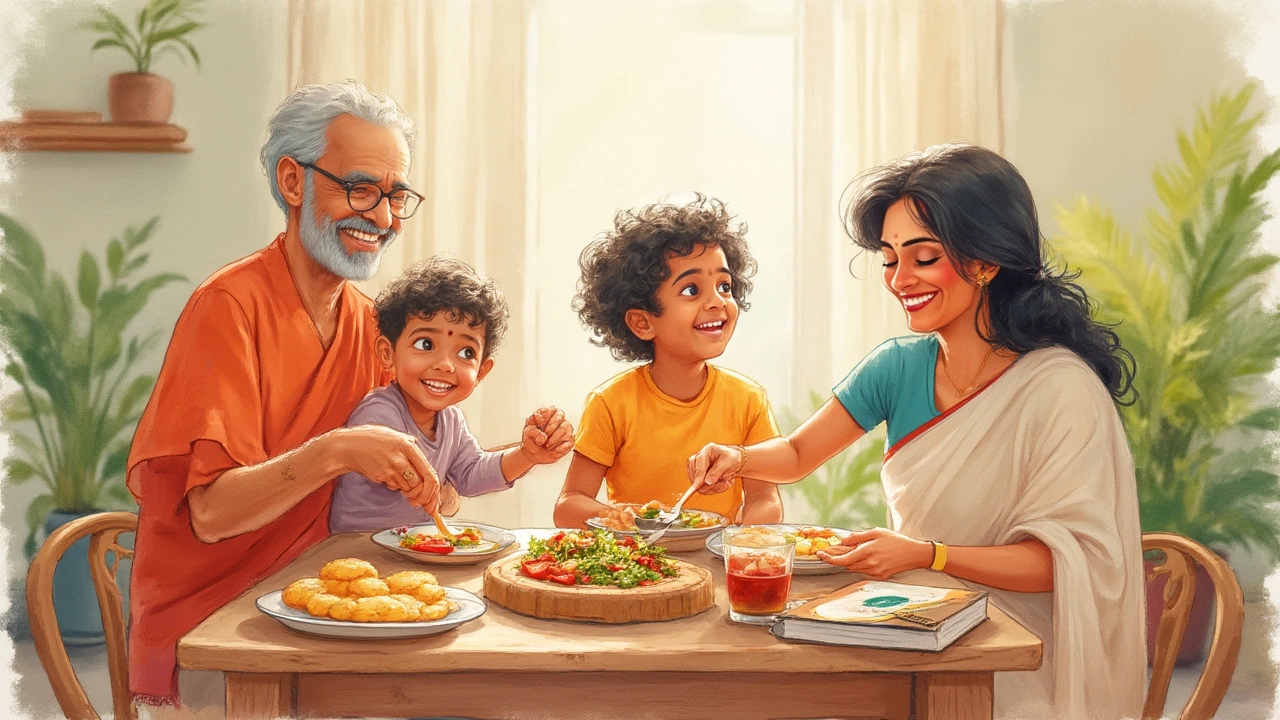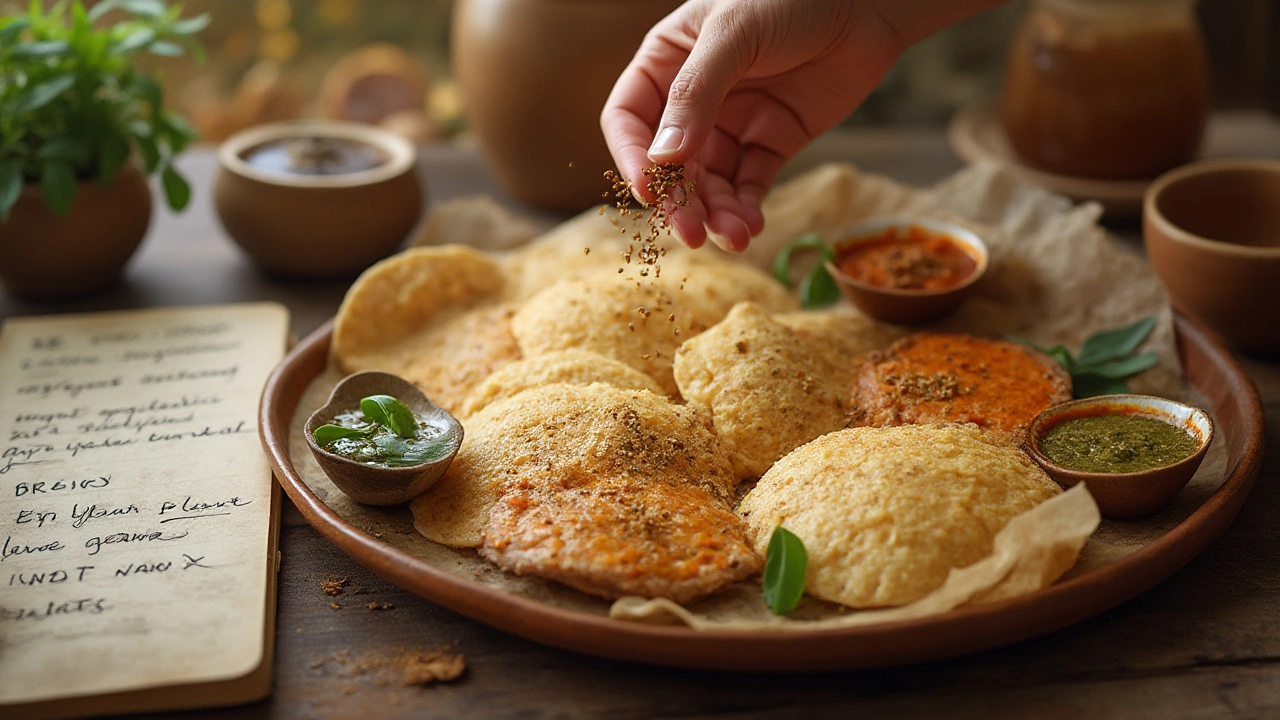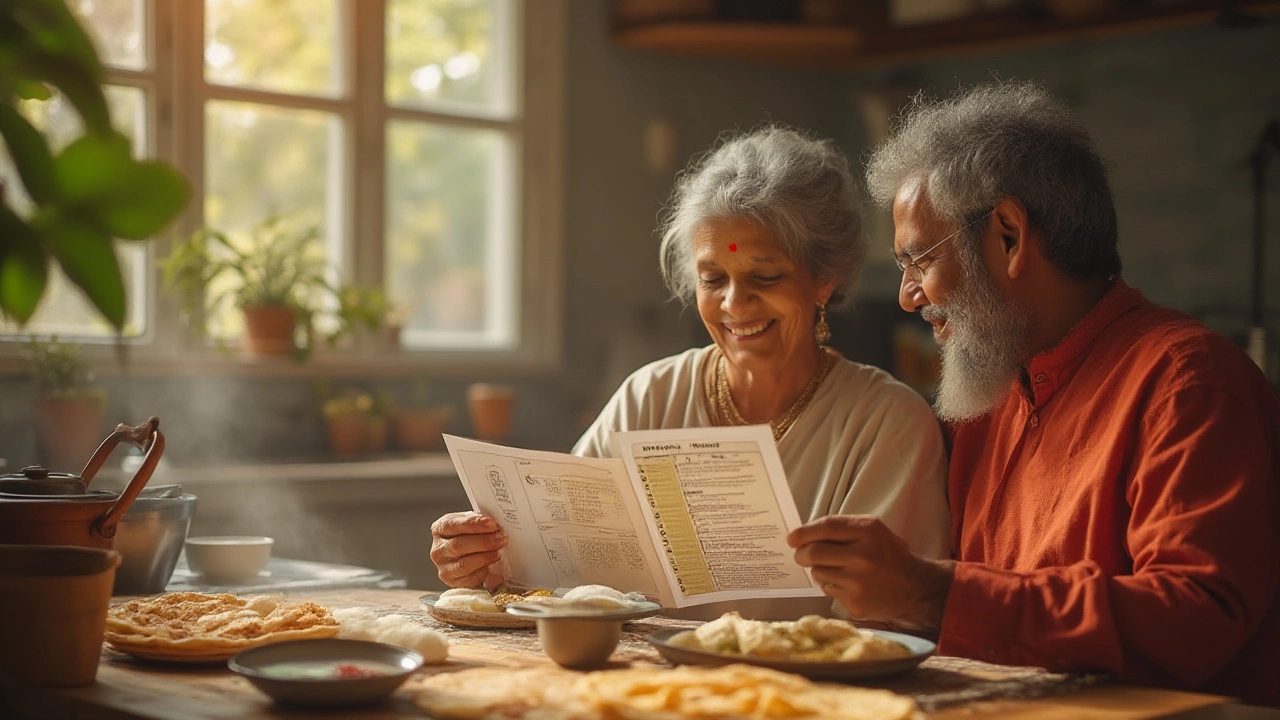South Indian breakfasts are legendary for their comfort and flavor. But if you’ve just been diagnosed with diabetes, you might be staring at a plate of warm idlis or that golden, crispy dosa and quietly wondering: can I really eat this? That doubt sneaks up every time you reach for familiar foods after the word “diabetes” enters your life. Let’s peel back the mystery around these classic dishes and figure out what’s fact and what’s just worry, using real-world advice that actually works at the breakfast table.
The Science Behind Idli and Dosa: What’s Really in Them?
Idlis and dosas may look simple, but there’s a bit of biochemistry going on underneath those fluffy or crunchy surfaces. The core ingredients—rice and urad dal (black gram)—are staples in many South Indian homes. Most idli and dosa batters are made from a 2:1 or sometimes a 3:1 ratio of rice to dal, which means there’s a hefty dose of carbs. Rice is the main culprit when it comes to spiking blood sugar—it’s high in carbohydrates and has a relatively high glycemic index on its own.
But it’s not all doom for diabetics. Fermenting the batter, something every good dosa or idli needs, actually helps break down some of the starches. Fermentation also bumps up the vitamin B content and makes certain nutrients more available. Does this mean all is forgiven? Not quite, but there’s a nuance here.
Let’s get specific. Plain white rice used in a traditional dosa or idli has a glycemic index (GI) of around 70 or more, which is considered high. GI is a sort of speedometer for how quickly a carbohydrate turns into glucose in your blood. Ideally, diabetics want food that falls below 55 on this index. Black gram (urad dal), on the other hand, lands closer to 40, making it a much slower burner. But since the rice wins the majority in the batter, it tilts the GI up.
| Dish | Glycemic Index (GI) | Main Ingredients |
|---|---|---|
| Idli | 60-70 | Rice, Urad Dal |
| Dosa | 70-80 | Rice, Urad Dal |
| Brown Rice Idli | <55 | Brown Rice, Urad Dal |
So, if you stick to heavy rice-based dosas and idlis, especially the white varieties, your blood sugar might not be too happy. But there’s wiggle room—and some clever swaps make all the difference.
How Do Idli and Dosa Affect Blood Sugar?
Here’s where real-life data steps in. Several studies out of India have actually tracked blood sugar responses after people eat classic South Indian breakfasts. For most healthy adults, eating three idlis led to a sharp rise in blood sugar within an hour. For people with diabetes, the jump was even higher and lasted longer. Dosas had a similar pattern, especially when served with potato masala or sugary chutneys. But it wasn’t all bad news.
When some people replaced part of the white rice with brown rice, oats, or more dal, the sugar spikes became much smaller. A study from Chennai’s Diabetes Research Centre found that a brown rice idli raised blood sugar 25% less than the regular kind. That’s a big difference for something so simple. More fiber in the batter (think: millet, oats, or extra dal) means the carbs take longer to break down, and blood sugar rises more gently.
How you eat these dishes also matters. If you eat plain idlis or dosas alongside protein-rich sides—say, sambar (a dal-based soup) or a coconut chutney that doesn’t drown in sugar—you’ll see a tamer blood sugar response. Pairing carbs with proteins and healthy fats is like putting speed bumps in the road, slowing that sugar rush in your body.
- Eat idlis/dosas with protein-rich sambar or chutney
- Skip potato masala and sweet chutneys
- Try to avoid ketchup or processed dips, which add hidden sugars
- Limit the portion—two small idlis or half a dosa may be plenty
- Don’t skip breakfast; waiting until you’re super hungry makes sugar spikes worse
You might even find your digestive system thanking you for switching up your sides. My own cat, Whiskers, always comes running when I chop veggies for sambar—maybe that’s her vote for more fiber too.

Idli, Dosa, and Diabetes: Myths and Facts
The biggest myth out there? That all South Indian breakfasts are off-limits for diabetics. This simply isn’t true. If you make smart tweaks, you can keep these comfort foods on the menu.
It’s much less about banning a dish and much more about portion size, quality of ingredients, and the company they keep on your plate. Portion control is not glamorous, but it’s the single most underrated diabetes skill. Instead of piling up four idlis, try stopping at two, and pad out your meal with vegetables. Add extra dal to the batter for protein—one local Chennai chef swears by a 1:1 ratio of rice to dal, with a handful of oats tossed in for texture and slow-release carbs. Oats add both bulk and soluble fiber, which help keep blood sugar calm and digestion happy.
Another false idea? That millet, brown rice, or red rice idlis are tasteless. Try them once, hot off the steamer, with a bright green coriander chutney, and you’ll realize how much flavor you’ve been missing. Adjusting your taste buds can take time, but there’s a world of difference between a chewy ragi dosa and the more common white variant.
Worried about fat and calories? Dosas are usually cooked with a swipe of oil, while idlis are steamed and basically oil-free. If you must pick, idli is your purest, lowest-fat option. But even then, moderation rules everything.
It’s worth mentioning that every person processes carbs a little differently. Your meter (or continuous glucose monitor, if you have one) is your best guide. Try having a small serving at home, test your sugar at the one-hour mark, and see how you react. This real-time data is way more useful than just reading a chart.
Smart Swaps and Creative Twists: Making Idli and Dosa Diabetes-Friendly
You don’t have to give up the foods you love if you know how to tweak them. Over the years, I’ve collected a grab-bag of hacks from grandmothers, nutritionists, and busy moms. Here are a few you can use right away:
- Choose whole grains: Brown rice or millets (like bajra, jowar, or ragi) lower the glycemic load of idlis and dosas and bring along extra fiber and minerals. Millets add a slight nutty flavor that even picky eaters often enjoy.
- Boost the dal: Upping the urad dal can make the batter richer in protein and help soften blood sugar swings. Some cooks replace part of the rice entirely with protein-rich dals or even chickpea flour for a hearty boost.
- Ferment longer: Longer fermentation can improve digestibility and break down some of the sugars naturally present in rice and dal. In warm weather, leaving your batter out for 10-12 hours does the trick. A fluffier idli often means a happier gut, too.
- Add vegetables to the batter: Grated carrots, spinach, or even beetroot not only liven up the color but also sneak in fiber and vitamins with almost zero extra carbs.
- Pair with the right accompaniments: Sambar (rich in lentils and veggies), coconut chutney (unsweetened), and mint chutney are much better than potato stuffing or sweet dips.
- Go easy with the ghee or oil: A light brush instead of a heavy pour adds flavor without going overboard on fat calories for dosas.
If you love the tangy taste of a fermented dosa but need a quick fix, try instant dosa batters made from oats or red rice—these keep blood sugar in check and are just as crispy. For idli, steam mini versions—they cook faster and help with automatic portion control. My friend Preeti even sneaks in some flaxseed meal or chia seeds for healthy omega-3s.

Living (and Thriving) with Diabetes: Enjoying Food Without Fear
Living with diabetes isn’t about cutting out everything joyful or familiar—especially not breakfast classics like idli and dosa. If you use a mix of whole grains, swap your sides, and listen to your body’s responses, there’s no reason you can’t keep these traditions on your table. The connection to family, roots, and memories matters; food is more than just fuel. It creates conversations and comforts, and sometimes the best solutions come from blending old recipes with new wisdom.
If you’re making these changes for the first time, start slow. Swap out just a quarter of your rice for millet or dal the first week, then bump it up as you get comfortable. Bring your family on board—healthy tweaks rarely succeed if only one person does the work. Try out different combinations and even host a “new idli” breakfast for friends. You might be surprised at the flavor (and the fun) that comes with reinventing a classic.
Always check your blood sugar a couple of hours after your meal, especially when you try a new recipe. Your own body’s feedback beats any statistic. And if you have a question or hit a rough patch, remember there are diabetes nutritionists who make these kinds of meals every day—they’ve seen every possible combination, including “my dosa failed, what now?” emergencies. There are plenty of communities online swapping notes and recipes if you need inspiration.
So, can people with diabetes eat idli and dosa? Absolutely, with a few thoughtful tweaks and a dose of common sense. Keep portion sizes reasonable, go big on protein and fiber, and don’t be afraid to experiment. Whiskers, my ever-curious cat, may not touch my ragi dosa, but I’m glad it stays on my breakfast plate. Enjoy your food, know what works for you, and keep finding joy in the little things—one (diabetes-friendly) idli at a time.
